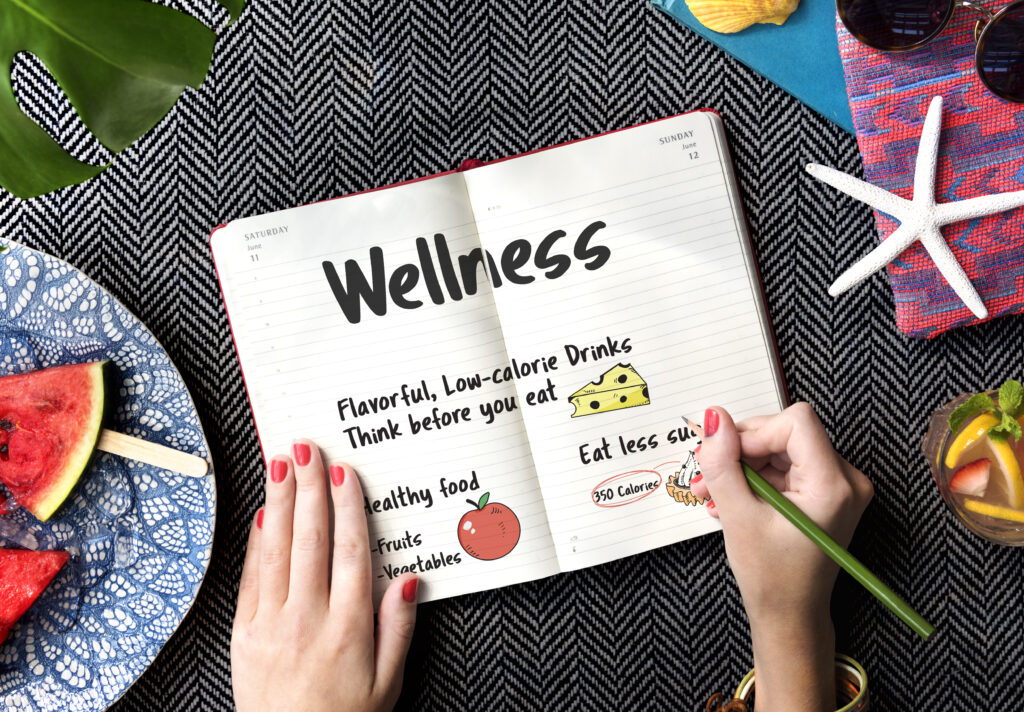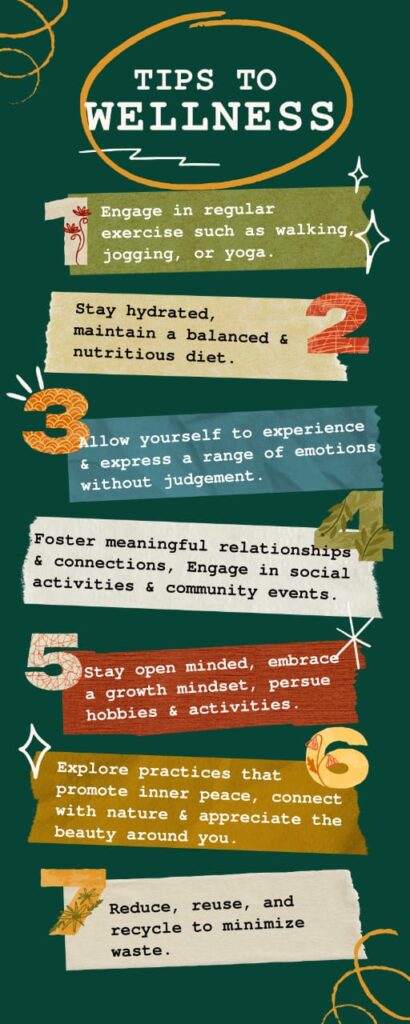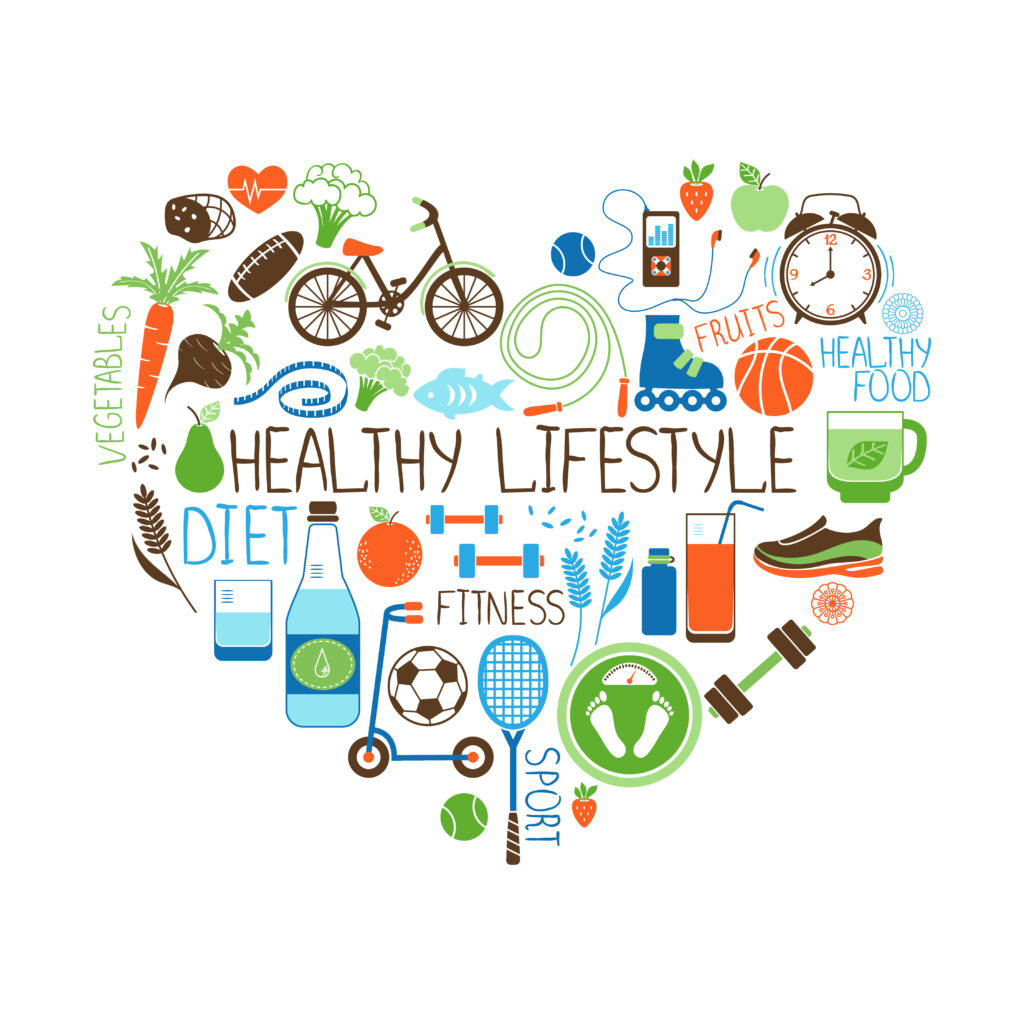“Embark on your wellness adventure: Navigate physical, mental, and emotional health for a more vibrant and fulfilling existence.”
It’s simple to undervalue wellbeing in the rush of contemporary life, where the pressures of relationships, career, and personal objectives frequently vie for our attention.
Wellness is a continual process of becoming aware of and making choices towards a healthy and meaningful existence; it is not just the absence of illness. We’ll examine the idea of wellness and the essential elements of a balanced, holistic lifestyle in this blog.
What is wellness?
A complex idea that touches on many aspects of our lives is wellness. The well-being of the body, mind, spirit, society, and environment are among these dimensions. A holistic approach to wellness emphasises the need for balance in order to achieve total health and pleasure, while acknowledging the interconnection of these elements.

Difference between health and wellness?
- Health focuses on physical well-being and the absence of illness, often involving medical assessments.
- Conversely, wellness takes a more comprehensive and proactive stance, taking into account mental, emotional, and social factors. Beyond illness prevention, it stresses a holistic lifestyle to improve general well-being and encourage a satisfying existence.
Types of wellness:
1. Physical Wellness:
Often when we think of health, the first thing that comes to mind is physical soundness. It entails preserving physical well-being with consistent exercise, a balanced diet, enough sleep, and abstaining from bad habits. Including physical activity in our daily lives improves our mental and physical health in addition to the former.
2. Emotional Wellness:
Understanding, controlling, and expressing our emotions in a healthy way are all part of emotional wellbeing. To successfully traverse life’s adversities, it is imperative to develop healthy coping skills, resilience, and self-awareness.
3. Social Wellness:
As social creatures by nature, humans depend heavily on the relationships we have with other people for their well-being. Creating and preserving strong relationships with friends, family, and the community is essential to social welfare. A robust social network is essential for fostering a feeling of purpose and belonging.
4. Intellectual Wellness:
Intellectual wellbeing requires both mental stimulation and lifetime learning. It entails being curious, gaining new experiences, and growing in knowledge. In addition to maintaining mental acuity, intellectual wellbeing promotes personal development and fulfilment.
5. Spiritual Wellness:
Achieving spiritual wellness involves discovering life’s meaning and purpose. It is more about having a connection to something bigger than oneself than it is about having religious beliefs. This dimension promotes mindfulness, introspection, and inner serenity.
6. Environmental Wellness:
The quality of the surroundings we live in directly affects how we feel about ourselves. Choosing actions that promote our own health and a healthy planet is a key component of environmental wellbeing. This involves adopting eco-friendly lifestyle choices and being aware of our environmental impact.

Wellness in action:
Setting attainable and unambiguous goals is essential to starting the path to a healthier life. These objectives act as checkpoints, assisting you in making deliberate decisions and forming routines that enhance your general well-being. These are some fundamental objectives for building a happier, healthier life.
Healthy living goals and effective implementation:

1-Regular Physical Activity:
- Goal: At least 150 minutes of moderate-intensity aerobic exercise or 75 minutes of vigorous-intensity exercise per week.
- Implementation: Pick enjoyable activities to engage in, including cycling, dancing, jogging, or strolling. Schedule frequent workouts and include movement in your everyday routine to develop the habit.
2-Balanced Nutrition:
- Goal: Adopt a well-balanced diet that includes a variety of fruits, vegetables, lean proteins, whole grains, and healthy fats.
- Implementation: Make thoughtful food selections, restrict portion sizes, and schedule meals in advance. Restrict your intake of processed meals, sweetened beverages, and high amounts of salt and saturated fats.
3-Adequate Hydration:
- Goal: Consume an adequate amount of water daily, aiming for at least 8 glasses (64 ounces).
- Implementation: Drink water throughout the day by keeping a reusable water bottle with you. Make a note to remember yourself to stay hydrated, particularly when you’re engaging in more physical activity.
4-Quality Sleep:
- Goal: Aim for 7–9 hours of quality sleep each night.
- Implementation: Make sure your bedroom is restful, stick to a regular sleep schedule, and have a calming nighttime ritual. In order to encourage improved sleep quality, limit screen time before bedtime.
5-Stress Management:
- Goal: Develop effective stress-management techniques to cope with life’s challenges.
- Implementation: Take up deep breathing techniques, mindfulness, meditation, or other relaxing and joyful pursuits. Determine the sources of stress and try to come up with proactive, constructive solutions.
6-Regular Health Check-ups:
- Goal: Schedule regular health check-ups and screenings to monitor and maintain your overall health.
- Implementation: Maintain a record of your vaccines, screenings, and appointments. Inform medical staff members honestly about any worries or symptoms you may be experiencing.
7-Social Connection:
- Goal: Cultivate and maintain positive relationships with family, friends, and the community.
- Implementation: Make social time a priority, stay in regular contact with family and friends, and take part in events or activities with other people. Develop deep connections with people that enhance your emotional health.
8-Continuous Learning:
- Goal: Foster intellectual wellness by engaging in continuous learning and personal growth.
- Implementation: Make time to read, go to classes or workshops, take up new interests, and push yourself to learn new abilities. Adopt a curious and lifelong learning mindset.
9-Mindfulness and Mental Well-being:
- Goal: Prioritize mental well-being through mindfulness and self-care practices.
- Implementation: Include yoga, deep breathing techniques, or mindfulness meditation in your regimen. Plan frequent downtime and take the initiative to ask for help when you need it.
10-Environmental Responsibility:
- Goal: Contribute to a healthier planet by adopting sustainable practices.
- Implementation: Trim, repurpose, and dispose of. Choose eco-friendly items, practise energy and water conservation, and encourage environmental stewardship in your neighbourhood.
Keep in mind that these objectives are not universally applicable, and it is essential to customise them to your own requirements and situation. In order to preserve a healthy and sustainable lifestyle, start small, acknowledge your accomplishments along the way, and modify your goals as necessary. Establishing routines that support long-term wellbeing is crucial.
For more interesting blogs, visit: Wellnesio.com and blog page

Helpful article.
👌